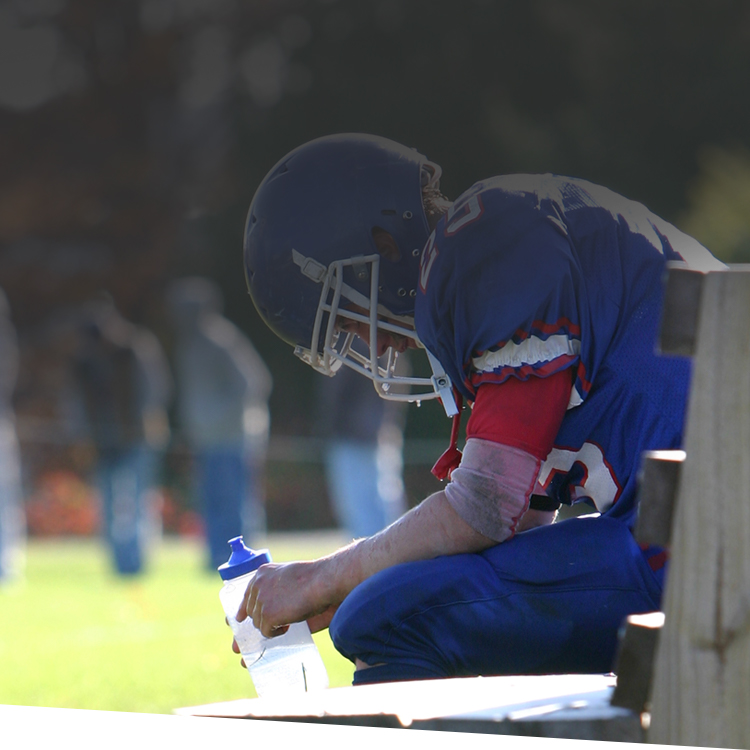It’s estimated that 25 million student athletes between the ages of five and 20 participate in sports. With statistics like this, it’s safe to say that sports are a huge part of the student experience.
The competitive push to be the best team, to be a superior player, win the championship, beat the school rival, be awarded the honor of team captain, have the crowd chant your name during the final seconds of the game—these are the dreams driving many athletic superstars. Their passion for the game keeps them striving for excellence. However, even your brightest athletes can experience burnout.
Burnout is often defined as chronic stress resulting from continued athletic training with too little recovery time. It is most often displayed as an absence of motivation and complete physical and mental exhaustion.
Serious student athletes often identify themselves with their sport. For students who intensely train year-round in a particular sport, this can be even more common. This, along with the pressure on kids to train harder to reach athletic goals, are serious contributors to burnout.
Training Pressures
Training pressures have increased for students as technology has intensified and elongated training seasons. Coaches now have access to technology that at one time was only available to professionals. This increases student odds for successful careers. However, it also increases their chances of overtraining. Overtraining makes students vulnerable to injury and burnout.
Injuries that end a student's season—or worse, their athletic career—can be emotionally devastating. Yet, younger athletes don’t necessarily think about when it’ll be time to walk away from the game—they’re focused on reaching new goals. So, if an injury suddenly halts their grandiose plans for athletic stardom, they find themselves unprepared mentally to accept this change.
Students who engage in intense training should be aware of their physical and emotional well-being. Great coaches help students stay mindful of the moving pieces in their lives, such as schoolwork, family, friends, personal reflection time, and even jobs. Just as injuries impact one’s ability to play their best, mental off-centeredness can also impact performance. Bad days happen. Bad weeks happen. Having the tools (and support) to overcome negative pressures is vital to a student’s athletic future.
Performance Plateaus
Performance plateaus also contribute to burnout. This is sometimes referred to as “staleness.” Students who train without seeing results often start to doubt themselves. And parents who invest a good amount of money into their child’s regimen without seeing progress can add to that pressure. Plateaus are common, but great coaches know how to navigate around these moments with motivation, support, and guidance.
Another cause of burnout is thought to be a shift in sports culture from intrinsic motivation to extrinsic rewards. Athletes no longer play for the simple joy of being part of the game. Trophies, medals, and awards contribute to the competitive pressure athletes feel.
Signs of Burnout
There are three common signs of burnout.
- Physical symptoms can include constant fatigue, even after sleeping a full night; decreased energy; increased illnesses and injuries; and inconsistent performances.
- Behavioral symptoms can include disinterest and lack of enthusiasm for practice or competition; inability to concentrate; frequent absences from practices and games; and excuses.
- Emotional symptoms can include an expressed desire to quit; decreased confidence; and feeling insignificant, angry, irritable, and apathetic.
Coaches can help combat student burnout through motivation, enthusiasm, spontaneity, and support. Coaches should set clear expectations not only for practices, but also for players. Conversations should be ongoing and always emphasizing an open-door policy. Creating a safe environment where students feel they can be honest about changes they’re experiencing, mentally and physically, is important for their development.
Practices should offer a variety of drills and intensity. Challenges should be obtainable, but also crafted to motivate players to push their boundaries.
Yet, the responsibility is not limited to your coaches. It’s vital that parents keep a healthy balance in their child’s training. Encourage your parents to not only engage with their child’s games, but to also encourage them to take time away from sports to enjoy other things as well.
Students also have accountability. Rest days are beneficial for the mind, body, and spirit. Positive self-talk, breathing techniques, and self-awareness are just a few of the tools students can use to help them overcome hard times in their training. And, for those not sure where to start, there are numerous apps available to walk through breathing techniques, positive affirmations, and meditations.

Tune in to ask questions related to this Source article or other topics you've encountered lately.
Visit our NEW Community and start posting.
Protect your school’s athletes with an added layer of coverage. Student Accident Insurance not only helps protect your students while on your campus—it covers them while transporting them to and from and playing games at other facilities. This coverage is an added peace of mind for your families, for pennies per child per day, that can easily be folded into your tuition or sports costs.
Additional ISM resources:
The Source for Private School News Vol. 17 No. 2 Stress Is Contagious: Don’t Let It Spread in Your School
The Source for Academic Leadership Vol. 16 No. 2 Where to Start to Help Reduce Student Stress





